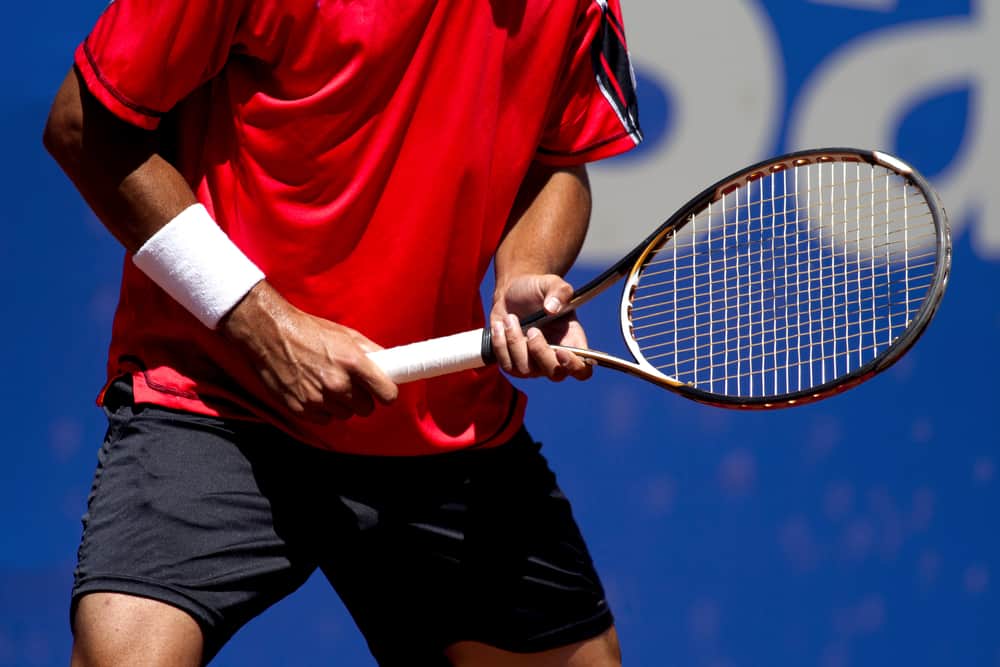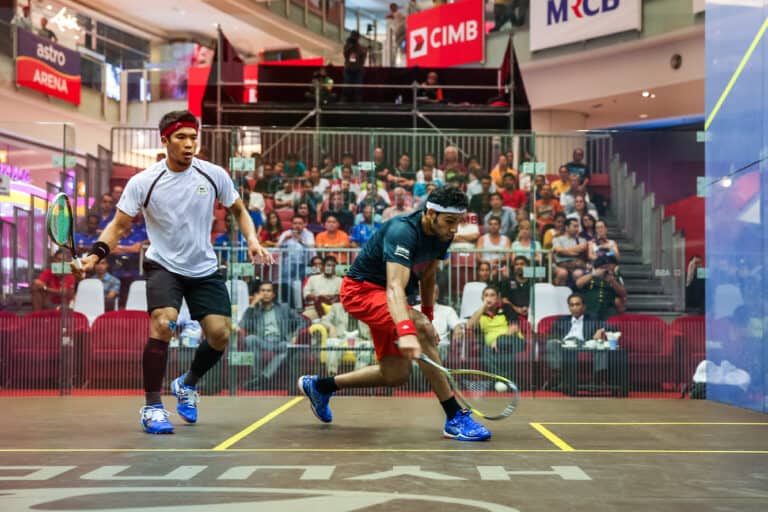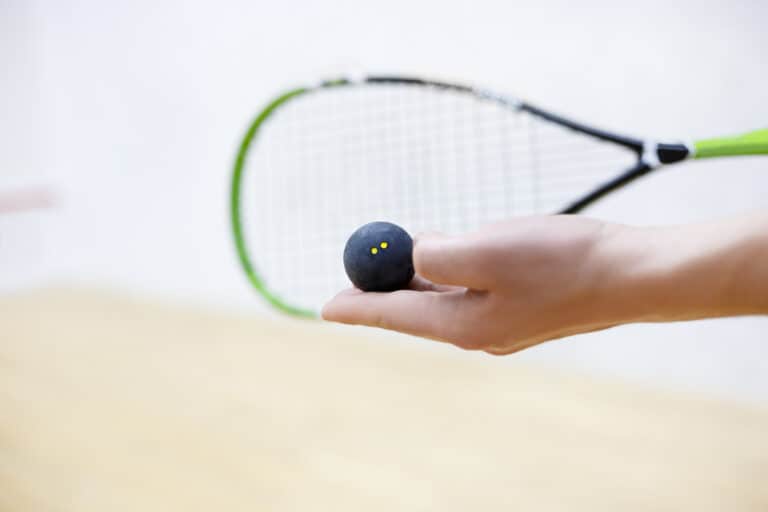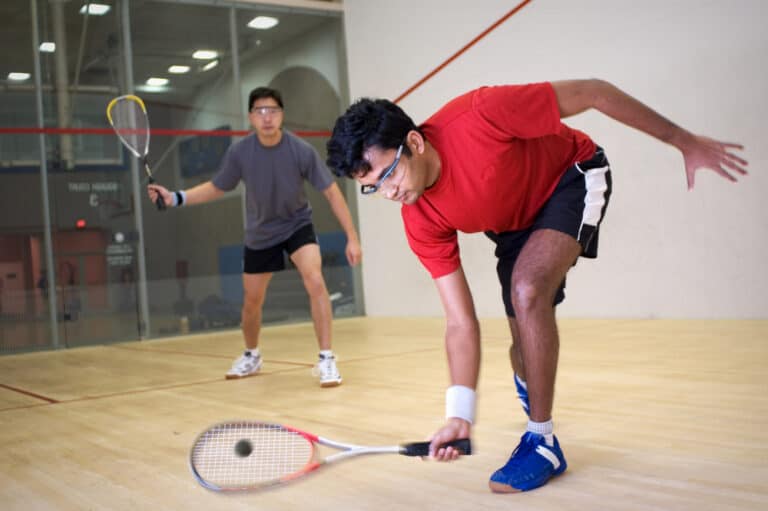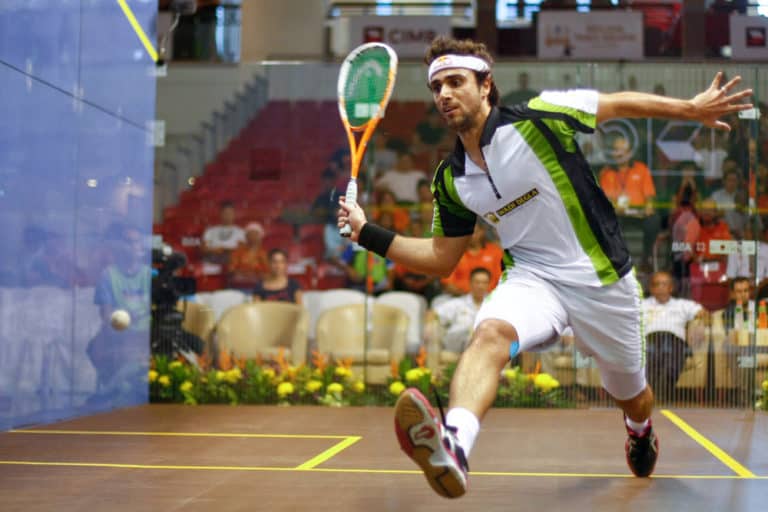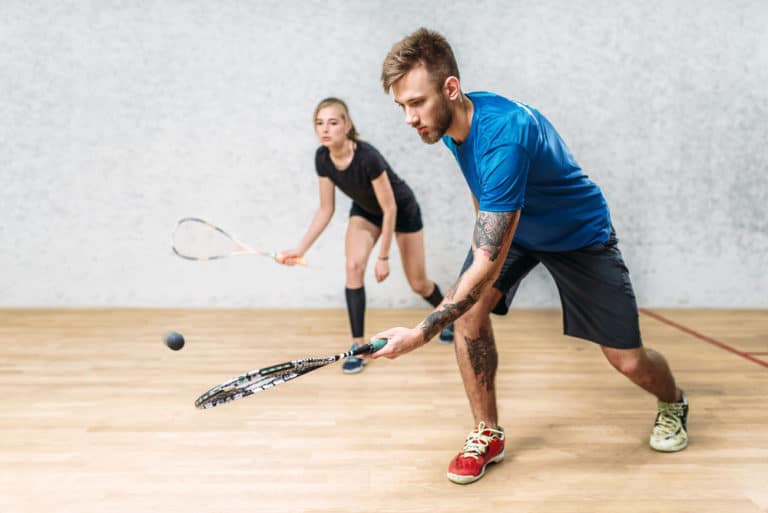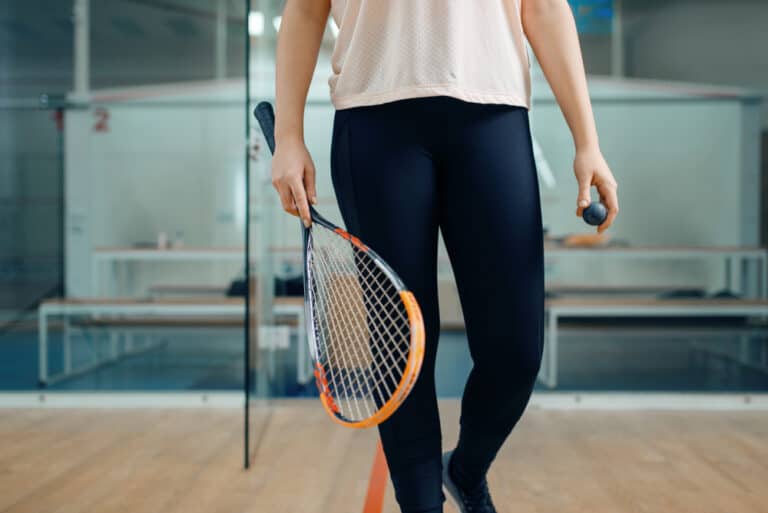Can You Play Squash With Tennis Rackets?
Are you wondering if you can play squash with a tennis racket? Since squash isn’t as popular as tennis, it is much harder to find the necessary equipment, especially in smaller towns where squash isn’t played. This might make you wonder if you can play squash with a tennis racket.
You shouldn’t use a tennis racket to play squash, as the tennis racket is too big and heavy for squash. Squash rackets are smaller and have a teardrop shape. They are lighter than tennis rackets and easier to swing on the small squash court. You can get injured using a tennis racket for squash.
Before using a tennis racket to play squash, you must first know the differences between the two and if there are any dangers to using a tennis racket. Then, you can consider what to look for when buying a squash racket to know how to choose the best one.
Can You Use A Tennis Racket For Squash?
Although squash and tennis rackets look similar, they aren’t the same and shouldn’t be used interchangeably. You cannot use a tennis racket for squash, and doing so can lead to injuries. You can also not play with a tennis racket in a squash tournament.
Tennis rackets are too big and heavy for squash. Because your movements are much faster in squash than in tennis, the size of the tennis racket affects you, and it can lead to injuries, especially shoulder and wrist injuries.
While you shouldn’t use a tennis racket for squash, there may be times when you have no other option, as you don’t have access to a squash racket. For example, if you are going to a squash court for the first time and don’t intend on going more than once. In this case, buying a squash racket for one time is senseless.
Therefore, you may consider using a tennis racket if you cannot borrow someone else’s squash racket. For this purpose, a tennis racket could work. However, using a tennis racket for squash isn’t recommended in the long run. Instead, you should invest in a proper squash racket, which you can find for an affordable price online. We’ll discuss how to choose the best squash racket later.
We’ve mentioned some fundamental differences between a squash and tennis rackets. Still, you may be interested to know more about the differences between the two and how these differences result in you being unable to play squash with a tennis racket.
How Do Tennis And Squash Rackets Differ?
Although squash and tennis are both racket sports, they differ greatly in speed and style. Squash is typically a much faster game indoors, and you hit the ball against a wall where it bounces back to your opponent.
Because squash is much faster than tennis, it is only logical that the racket will also differ. The ball doesn’t travel as far in squash as in tennis. But it travels much faster and a smaller distance, meaning that you need to move the racket faster. So, how do squash and tennis rackets differ?
1. Shape
The most noticeable difference between a squash racket and a tennis racket is the shape. A squash racket has a more teardrop shape, whereas a tennis racket is more oval. This means that a squash racket is also strung differently, and it looks like the strung part of a squash racket makes up more of the racket than it does in a tennis racket.
2. Size
Tennis rackets are bigger than squash rackets. The maximum size tennis racket you can use in tournaments and the biggest size racket you can buy commercially is 29 inches. A squash racket may not be over 27 inches, making it two inches smaller than the average tennis racket.
Although this does not seem like a significant size difference, it does affect the game and player when a bigger racket is used.
3. Weight
Of course, with the increased size also comes an increase in weight. A squash racket usually weighs between 7 and 9 ounces, while a tennis racket weighs between 9.8 and 10.9 ounces. Again, this doesn’t seem like a significant difference, yet it affects how fast and hard you can return a squash ball.
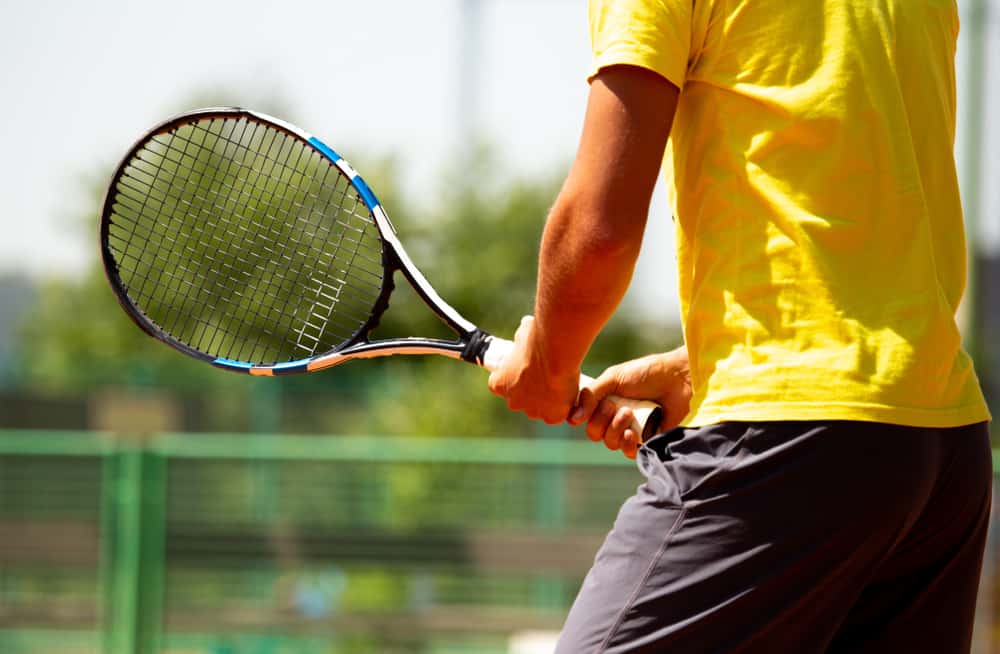
Can You Use Tennis Strings For A Squash Racket?
Now that you know the differences between squash and tennis rackets, you may wonder if their components differ too. For example, do squash rackets and tennis rackets have different strings, and can you use tennis strings on a squash racket?
According to HEAD, a manufacturer of tennis and squash rackets, you shouldn’t use tennis strings on a squash racket. Squash strings come in different sizes than tennis strings, and the type of string used significantly affects the resistance and precision of each hit.
Squash strings typically come in 16-gauge, 18-gauge, and 20-gauge. The different gauges determine the thickness of the string. For example, 16-gauge strings are thinner than 18-gauge strings. The thickness of the string also determines how big the tension of the strings is and how much accuracy the ball is deflected off the racket.
Tennis strings also come in different gauges, and the gauges determine the tension on the string. However, tennis strings and squash strings are often made from different materials. They are designed to improve your performance while playing a specific sport.
If you’re in a pickle, you won’t harm your squash racket by adding tennis strings to it. Doing so should be a last resort, and you should instead use squash strings if you can find them. Fortunately, squash strings are available online, with a big selection of strings to choose from.
How To Choose A Squash Racket
Once you’ve committed to playing squash, you will need a racket. Fortunately, you can also find a squash racket online, with a bigger selection than at your local sports shop. When choosing a squash racket, you must consider its shape, balance, and weight.
Squash rackets are available with an oval-shaped head or teardrop-shaped head. Most professional squash players prefer a teardrop-shaped head, which is recommended for beginners. A teardrop-shaped head delivers more power and has a bigger sweet spot.
The balance of the squash racket depends on your preference and playing style. Squash rackets have three balances: head heavy, balanced, and head light. Head-heavy squash rackets deliver more power when struck against the ball. Balanced squash rackets ensure versatile play. Head light squash rackets are perfect for those who prefer a quick return.
The weight of the squash racket also determines how much strength is needed to return the ball. A heavier squash racket delivers more power but takes more energy to move around. Therefore, you must choose a squash racket that isn’t too heavy to handle but has enough weight to return the ball with strength.
Conclusion
You shouldn’t use a tennis racket for squash. Squash and tennis rackets differ significantly in terms of size, weight, and shape. Using a tennis racket for squash is prohibited in tournaments and may lead to injuries. A tennis racket doesn’t deliver the best power output when playing squash.

